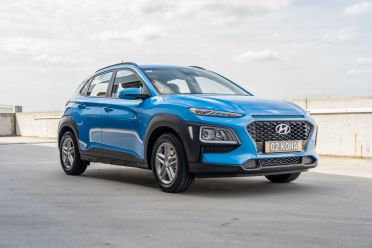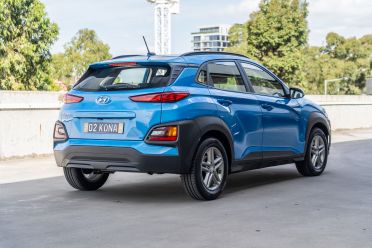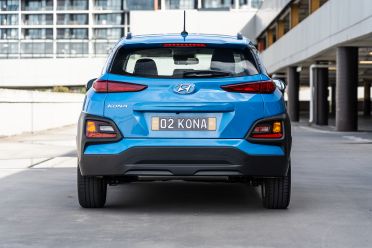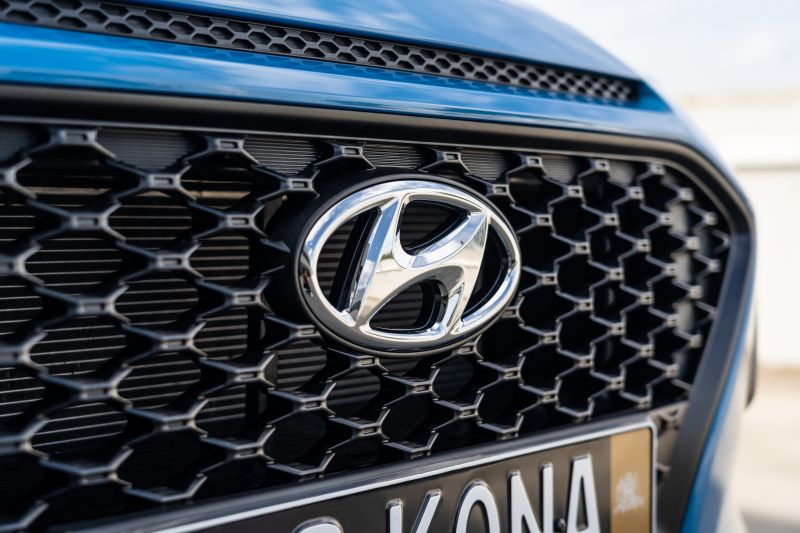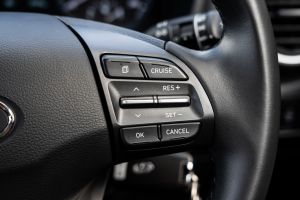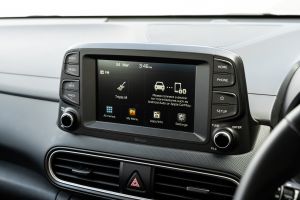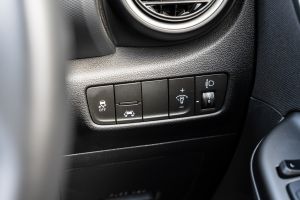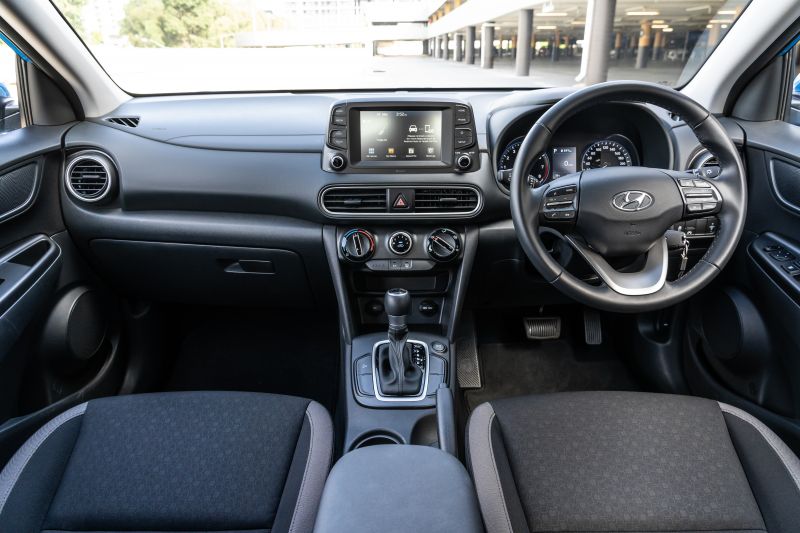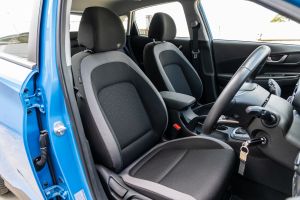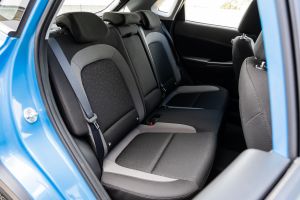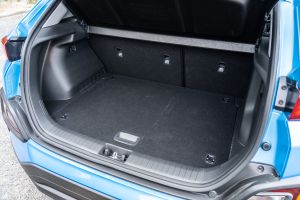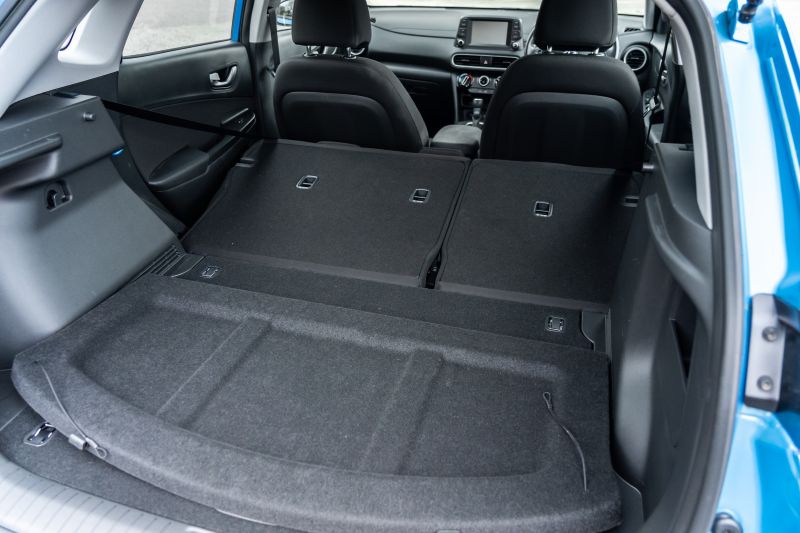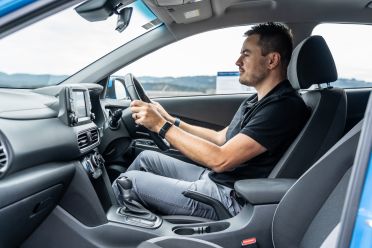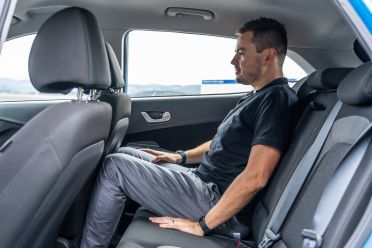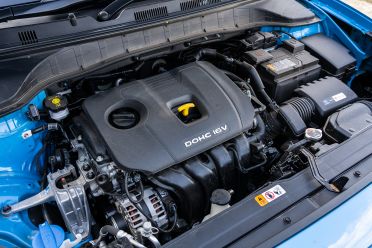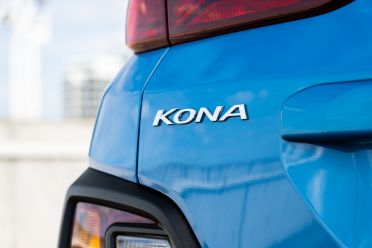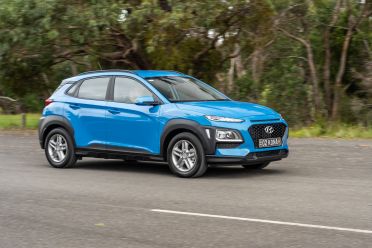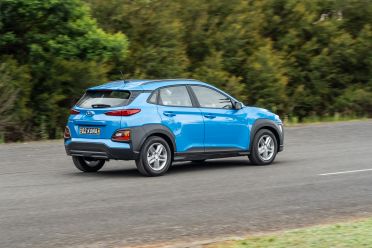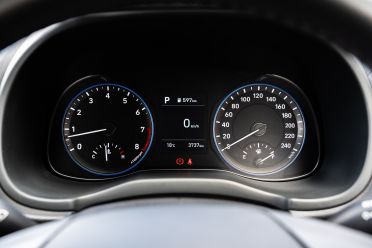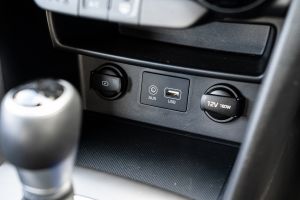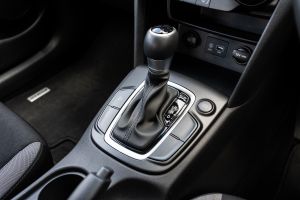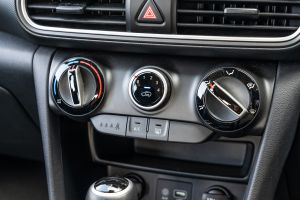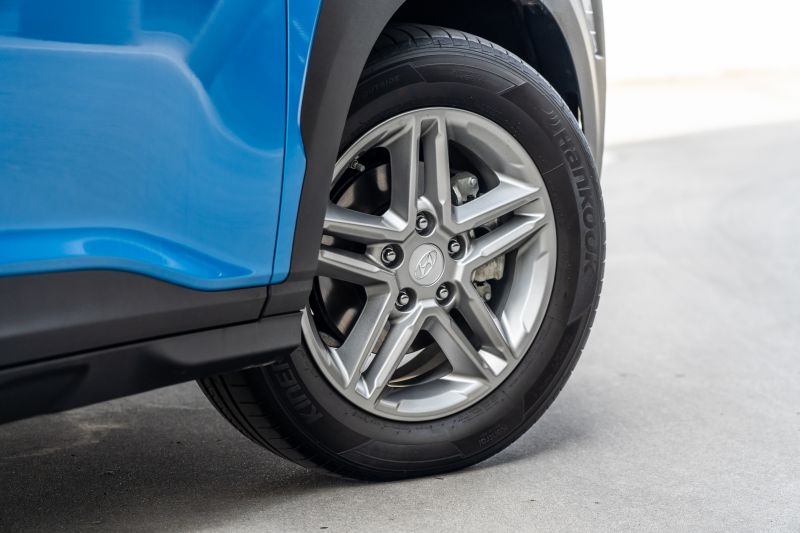The world has gone crazy for SUVs, so much so that manufacturers are creating them for virtually all segments of the market.
Much like the other vehicles in its segment the Hyundai Kona looks like a bonafide SUV, but when you take a closer look, you’ll notice it’s more a faux-wheel drive than shrunken off-roader.
The Kona is based on the i30 hatchback and, while it’s fitted with plastic-clad wheel arches, it only rides 30mm higher than the i30 (ground clearance of 170mm v 140mm). It also comes at a price premium over the i30 – but as is the case with many of life’s purchases, sometimes the heart wins over the head.

How much does the Hyundai Kona Active cost?
Hyundai’s Kona range kicks off from $24,300 before on-road costs for the entry-level front-wheel drive Kona Go, although it can be had with all-wheel drive for an extra $3500.
Pricing then stretches to the Kona Highlander, which is priced from $39,800 before on-roads and is also available in both front- and all-wheel drive configurations.
The vehicle we’re testing here is one up from the base model, the Kona Active. It’s priced from $25,800 before on-road costs and, while our vehicle is front-wheel drive, it’s available with an on-demand all-wheel drive system for an additional $3500.
It’s worth noting all front-wheel drive variants come with a naturally aspirated 2.0-litre four-cylinder petrol engine and six-speed automatic, and all all-wheel drive models receive a 1.6-litre turbocharged four-cylinder petrol engine mated to a dual-clutch transmission.
In comparison to the i30 with which the Kona shares its platform, prices are around $2000 extra for equivalent Kona variants.
What do you get?
The Kona Active picks up the following equipment as standard on the outside: 16-inch alloy wheels, rear parking sensors, a reverse-view camera, LED daytime running headlights, automatic halogen projector headlights, a tyre pressure monitoring system, and central locking.
Inside the cabin you’ll find a leather-wrapped steering wheel and gear shifter, cloth seats, a 7.0-inch infotainment system (check out our detailed video review of the Hyundai 7.0-inch infotainment system), Apple CarPlay and Android Auto, cruise control, USB connectivity and charging, Hyundai AutoLink, lane-keeping assist, a six-speaker stereo, Bluetooth connectivity, AM/FM radio, and manual climate control.
The Kona is available in six colours, with all but the base white colour a $595 option.
Is the Hyundai Kona safe?
The Hyundai Kona scored a five-star ANCAP safety rating when it was tested in 2017. You can get more detail on the results here.
The upshot of the test? A rating of 35.07 out of 37 for the overall score.
Unfortunately the Kona Active is only fitted with a camera-based autonomous emergency braking (AEB) system that works at city speeds. It also misses out on blind-spot warning and rear cross-traffic alert.
Both of those features come standard on the more expensive Elite and Highlander models.
What is the Hyundai Kona Active like on the inside?
On first glance the interior of the Hyundai Kona doesn’t look too bad, but upon closer inspection it’s not hard to get lost in a sea of black plastics.
Push almost any surface in the cabin and you’ll be met with a scratchy, harsh surface that takes away from the premium experience you’d expect for the extra cost atop the i30 hatchback.
That also translates to fit and finish. Grab the centre console lid while open and move it around, and the entire centre console shifts along with it. It’s pretty disappointing, although that’s essentially the only major issue we found.
The rest of the cabin feels solid and well built. While the cloth seats are basic, the design is nice enough and they’re easy to keep clean. The buttons around the gear stick are also likely to stay clean, given they don’t do anything.
There are three blank buttons around the gear lever (of the four), and another two on switch bank near the driver’s door (of six).
Hyundai’s infotainment system measures 7.0 inches and comes standard with Apple CarPlay and Android Auto, but misses out on inbuilt satellite navigation. The sound system is good, with six speakers on offer. It won’t blow your ears off, but it sounds pretty good for a cabin this size.
Radio options are limited to FM and AM, with DAB+ not available. You can stream music through your phone using Bluetooth, in addition to USB and auxiliary devices.
One thing we often harp on about with Hyundais is the inability to use voice recognition unless you have smartphone mirroring active. In most other cars the vehicle comes with a basic voice recognition system to call people, enter destinations, and call up other commands.
Hyundai’s system requires a phone to be connected via a cable for the system to work.
Outside of that grievance the infotainment system is easy to use, and pretty fast. Ahead of the driver is a small monochrome information display offering trip computer information, along with a digital speed readout.
Second row knee- and toe room is almost non existent if the driver’s seat is moved more than three quarters of the way back. That’s partly thanks to the Kona being 175mm shorter than the i30. There are also no air vents or USB chargers for second-row passengers.
But you will find a centre arm rest with two cupholders, along with ISOFIX points for the two outboard seats.
Cargo space is limited to 361 litres with the second row in place, and it expands to 1143L with the second row folded. That’s 34L and 158L down on the i30 respectively.
While it’s less than the space on offer in the i30, if cargo space is a must you’ll thank your lucky stars you didn’t opt for the CX-3, which only offers 264L of cargo space with the second row in place.
Beneath the cargo floor you’ll find a space saver spare tyre, with the cargo floor itself offering four storage hooks on its base, with a detachable cargo blind.
What’s under the bonnet?
While all-wheel drive versions of the Kona snag a turbocharged 1.6-litre four-cylinder petrol engine, front-wheel drive versions get a 2.0-litre naturally aspirated four-cylinder petrol engine.
It’s an Atkinson cycle engine and is also used in the Hyundai Veloster (you can check out our 2020 Hyundai Veloster 2.0 manual review here). If you’d like to get a basic explanation of what an Atkinson cycle engine is and how it works, you can also check out this part of our video review.
It produces 110kW of power and 180Nm of torque and consumes 7.2 litres of fuel per 100km on the combined cycle. During testing, we were hovering around the 9.0L/100km mark, which included city, highway, and country driving, plus some idling time during filming.
The Kona runs on 91RON unleaded petrol with the engine mated to a six-speed automatic torque converter transmission.
How does the Hyundai Kona Active drive?
Weighing in at just over 1350kg, the Kona isn’t lugging around a huge amount of weight, which is why the Atkinson cycle engine works a charm. It produces both its peak torque and power quite high in the rev range – 6200rpm and 4500rpm respectively.
That means you do need to lean hard on the throttle at times to keep the Kona moving, with the downside to that being the amount of noise transmitted into the cabin. It quickly gets thrashy if you stay in the throttle to get ahead of traffic.
But in regular driving it works well with the six-speed automatic transmission to deliver a smooth experience with just enough punch.
The steering is light and the reverse-view camera clear, which makes parking in tight spaces easy. Visibility out the front and sides is good with decent-sized wing mirrors, but you’ll find the narrow envelope out the rear window a little hard to see out of, especially if you have second row passengers.
Ride and handling is regularly where Hyundais shine. The local ride and handling tune deals well with Australian roads, and the ride is softened off further thanks to the 60 profile rubber on the 16-inch alloy wheels.
Bumps and potholes don’t transmit through the cabin, but the suspension is firm enough to provide a sporty feel behind the wheel. That comfort extends to corrugated gravel roads, where this setup isolates vibrations to ensure they aren’t transmitted into the cabin.
Front-wheel drive variants are lumped with a basic torsion beam rear suspension arrangement, but it doesn’t affect the ride enough for it to sway buyers away from the cheaper base offering.
Despite not being powerful enough to set a world speed record, the 2.0-litre engine provides enough pep for basic overtaking. Sometimes cars this size feel underpowered, but the Kona doesn’t fall into that category.
One thing we really aren’t a fan of is the lane-keeping assist function. It uses a camera mounted to the windscreen to guide the car through corners. It works okay on the freeway on open radius bends, but it hates tighter turns and rarely works correctly on country roads.
Often you’ll expect it to intervene as you drive through a sweeping bend on a country road and then it doesn’t. Other times you assume it won’t intervene, only for it to chime in at the last minute and sharply turn the wheel.
We found it better to just switch it off and pretend it doesn’t exist.
How much does the Hyundai Kona Active cost to run?
Hyundai offers the Kona with a five-year, unlimited-kilometre warranty with service intervals every 15,000km or 12 months (whichever occurs first).
Over a five year period, the Kona will cost $1420 to service. That comes out to around $284 per service.
The servicing costs are very reasonable, but they are pipped by Toyota with the C-HR, which comes in at $1000 over five years ($200 per service) with service intervals every 12 months or 15,000km also.
CarExpert’s take on the 2020 Hyundai Kona Active
The SUV game is a funny one. The Kona is more expensive, offers less space and comes with a less powerful version of Hyundai’s 2.0-litre naturally aspirated four-cylinder petrol engine in comparison to its i30 donor car.
But, just like the CX-3 before it, people are lining up in droves to opt for the tougher-looking version of the traditional hatchback.
With that in mind, the Kona is a good option for older drivers who perhaps want an easier car to climb in and out of, while cargo space is only slightly compromised in comparison to the i30.
If it were our money, we’d be more than happy with opting for the naturally aspirated 2.0-litre over the 1.6-litre turbocharged petrol. The addition of a multi-link rear end in all-wheel drive models wouldn’t be enough to justify the big price jump.
If you are looking at a Hyundai Kona, it’s also worth shortlisting the i30. It offers more space, is more affordable and drives slightly better thanks to its lower centre of gravity.






